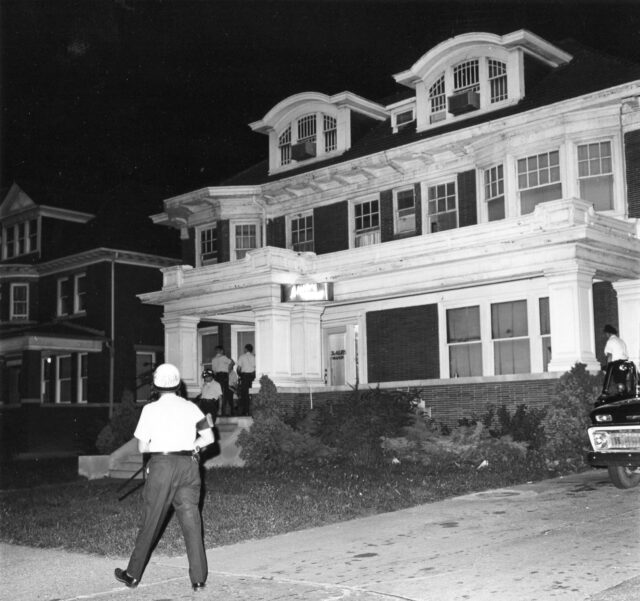The site of a transient motel in Detroit where three young Black men were killed, allegedly by white police officers, during the city’s bloody July 1967 race riot is receiving a historic marker
Site of 3 killings during 1967 Detroit riot to receive historic markerBy COREY WILLIAMSAssociated PressThe Associated PressDETROIT
DETROIT (AP) — The site of a transient motel in Detroit where three young Black men were killed, allegedly by white police officers, during the city’s bloody 1967 race riot is receiving a historic marker.
A dedication ceremony is scheduled Friday several miles (kilometers) north of downtown where the Algiers Motel once stood.
As parts of Detroit burned in one of the bloodiest race riots in U.S. history, police and members of the National Guard raided the motel and its adjacent Manor House on July 26, 1967, after reports of gunfire in the area.
The bodies of Aubrey Pollard, 19, Carl Cooper, 17, and Fred Temple, 18, were found later. About a half dozen others, including two young, white women, had been beaten.
Several trials later were held, but no one ever was convicted in the deaths and beatings.
“A historical marker cannot tell the whole story of what happened at the Algiers Motel in 1967, nor adjudicate past horrors and injustices,” historian Danielle McGuire said. “It can, however, begin the process of repair for survivors, victims’ families and community members through truth-telling.”
McGuire has spent years working with community members and the Michigan Historical Marker Commission to get a marker installed at the site.
“What we choose to remember — or forget — signals who and what we value as a community,” she said in a statement. “Initiatives that seek to remember incidents of state-sanctioned racial violence are affirmative statements about the value of Black lives then and now.”
Resentment among Detroit’s Blacks toward the city’s mostly-white police department had been simmering for years before the unrest. On July 23, 1967, it boiled over after a police raid on an illegal after-hours club about a dozen or so blocks from the Algiers.
Five days of violence would leave about three dozen Black people and 10 white people dead and more than 1,400 buildings burned. More than 7,000 people were arrested.
The riot helped to hasten the flight of whites from the city to the suburbs. Detroit had about 1.8 million people in the 1950s. It was the nation’s fourth-biggest city in terms of population in 1960. A half-century later, about 713,000 people lived in Detroit.
The plummeting population devastated Detroit’s tax base. Many businesses also fled the city, following the white and Black middle class to more affluent suburban communities to the north, east and west.
Deep in long-term debt and with annual multi-million dollar budget deficits, the city fell under state financial control. A state-installed manager took Detroit into the largest municipal bankruptcy in U.S. history in 2013. Detroit exited bankruptcy at the end of 2014.
Today, the city’s population stands at about 633,000, according to the U.S. Census.
The Algiers, which was torn down in the late 1970s and is now a park, has been featured in documentaries about the Detroit riot. The 2017 film “Detroit” chronicled the 1967 riot and focused on the Algiers Motel incident.
“While we will acknowledge the history of the site, our main focus will be to honor and remember the victims and acknowledge the harms done to them,” McGuire said. “The past is unchangeable, but by telling the truth about history — even hard truths — we can help forge a future where this kind of violence is not repeated.”

COMMENTS
Please let us know if you're having issues with commenting.